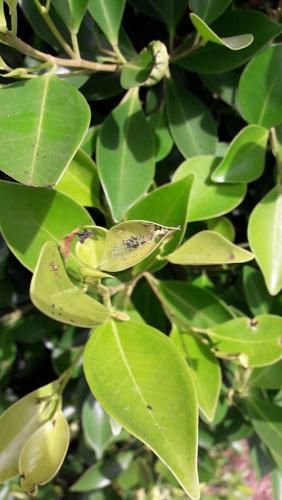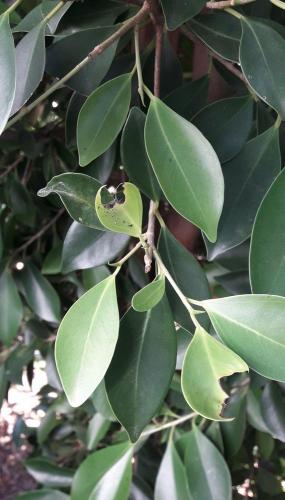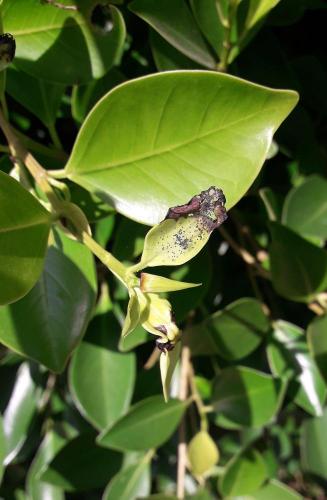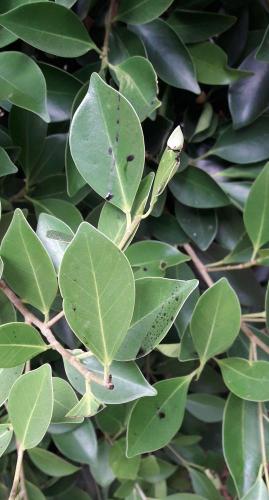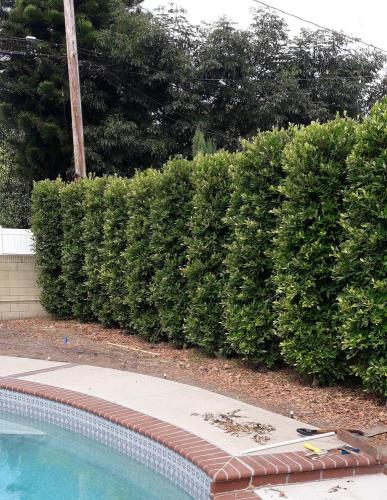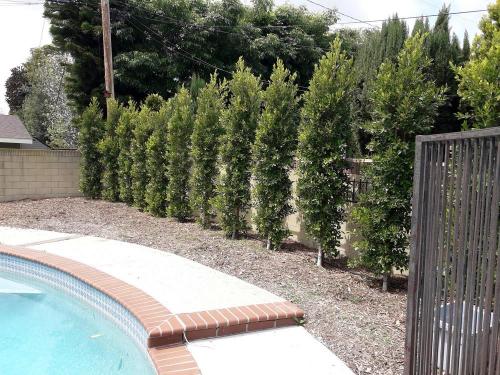The problems I described with curl and warts was when the nitidas were pretty new, not long after I first put them in. The nursery guy said they were very popular, fast growing, cheap, so I bought them in late summer not knowing anything about their pests. The pests came a couple months later and I used the imidacloprid in early spring the following year, seemed to work, I used it again last spring for the second application. Haven't seen curling much since.
I get the impression the imidacloprid will be banned in 2024 so I was trying to get another dose now and have it for next spring, but that looks like a non-starter, that's why I was asking if anyone in the community knew of an alternate. Sorry for this long story.
Speaking of nitida diseases, however, they now are afflicted by something else. I trimmed them recently using hand hedge shears but I see some leaves have holes eaten in them and a kind of fuzzy, webby substance on them with tiny dots imbedded in the fuzz.
When clipping the small branches they ooze out a milky white liquid, I noticed in a number of places where the ooze dripped on some lower leaves that the dried ooze turned black. This could be normal, haven't paid much attention in the past, but some of the clipped leaves on the ground turn black instead of normal dried out brown.
I looked online and got the impression the black leaves are caused by mold from overwatering. They are on a drip irrigation system in the summer for 45 minutes every other day but now I have reduced the frequency to an hour a week, will see if this has any effect.
These leaf problems seem to have arisen since I trimmed them. Maybe a dirty clipper? I went from bush to bush without disinfecting the garden shears in between.
These nitidas are indeed aggressive growers, they have really taken off after only two years, you can compare the two hedge pictures. I have already trimmed them several times. They are great hedge bushes but are becoming higher maintenance than I anticipated and only two years old. Every nursery around here has them for sale, I should have learned earlier about their issues. No more systemic is going to be a kick in the shins.
I would welcome any inputs on the leaf problems.
